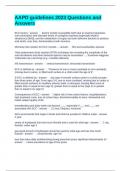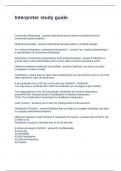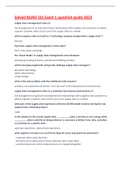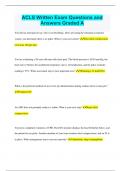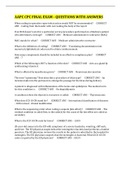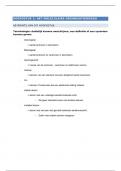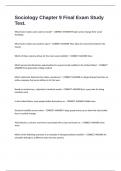Exam (elaborations)
AAPD guidelines 2023 Questions and Answers
- Course
- Institution
AAPD guidelines 2023 Questions and Answers ECC factors factors include susceptible teeth due to enamel hypoplasia, oral colonization with elevated levels of cariogenic bacteria (especially Mutans streptococci [MS]), and the metabolism of sugars by tooth-adherent bacteria to produce acid which, o...
[Show more]
